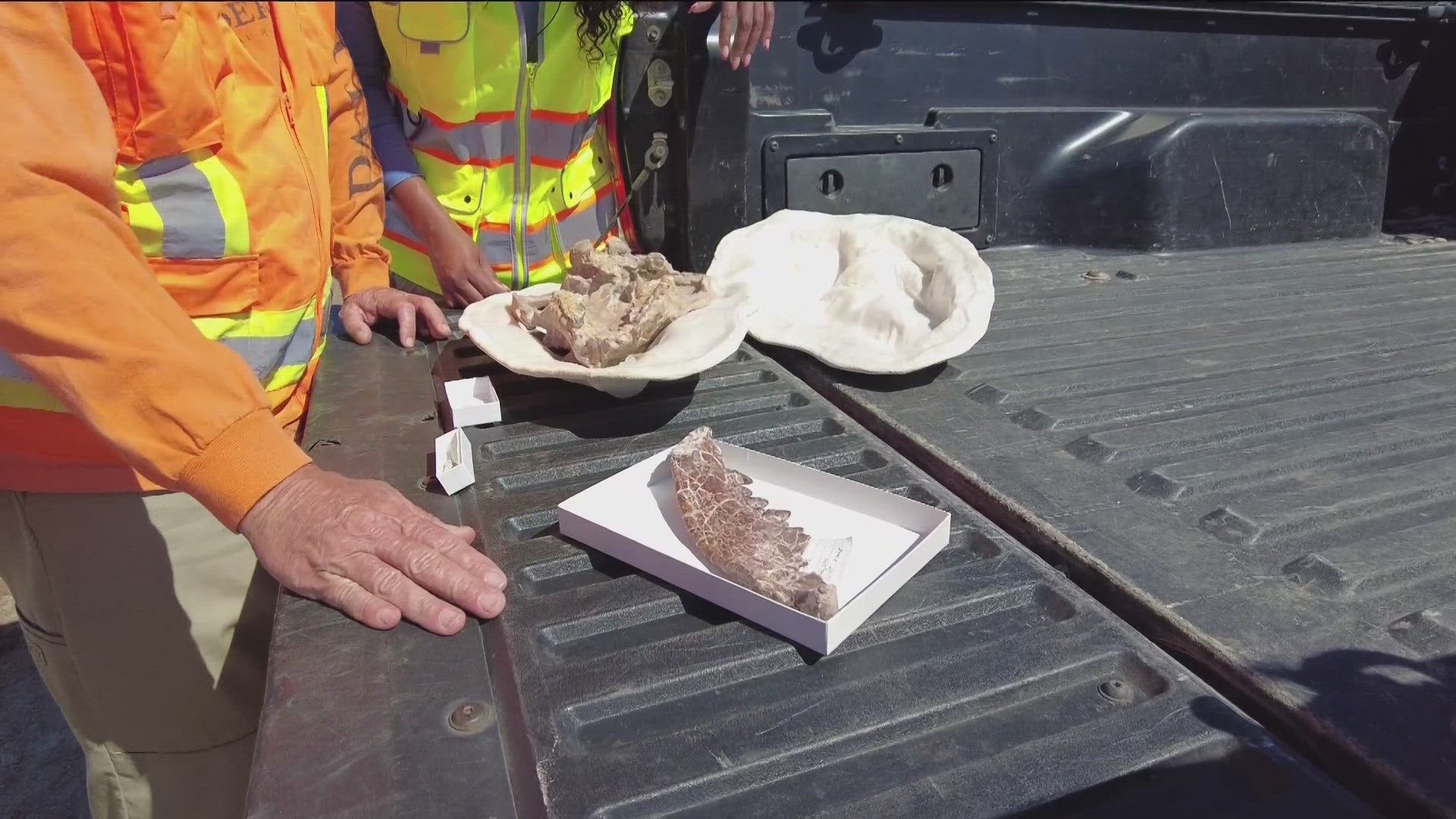SAN DIEGO — There is history all around us, including below our feet. The paleontologists at the San Diego Natural History Museum have unearthed thousands of fossils detailing the rich environmental history of our county. And with a growing collection, they are going to need a bigger space.
Before we talk about the new exhibit, let's unearth some of San Diego's prehistoric history that makes the Natural History Museum come alive.
"These are typical fossils we find in the Friars Formation. This is like a hooved animal, but it has omnivorous teeth. So, it could be tubers and other plant material, but it looks pretty much like a carnivore," explained Patrick Sena, a Field Paleontologist with PaleoServices.
PaleoServices is a consulting service that specializes in paleontology in San Diego and throughout Southern California. The organization has been operating since 1981 and became a formal department with the San Diego Natural History Museum in 1995.
Sena also detailed the bottom jaw of an ungulate, think pig like animal, with carnassial teeth that moved like scissors for cutting. Next the focus was shifted to a large jaw connected to the skull of a Brontothere, think rhino like creature.
"Cheek bones, this is like the top of the head, the skull. The nose would have been right here. The teeth coming down and then the eyes would be kinda right here," explained Cypress Hansen with the San Diego Natural History Museum.
While the bigger fossils are more visual and share their own story, it's the tiny fossils, like a primate tooth, that give a little bit more detail when visualizing an ancient environment.
"This guy is big, and he can walk around everywhere he needs to be. When the little guys are specific to where they kind of like hang out and live," said Rodney Hubscher, Field Manager with PaleoServices.
During a dig at a construction site in a suburb of San Diego County, the sandstone and claystone under our feet was a part of the Friars Formation, dating back 45 to 47 million years ago. While the highlighted fossils we just talked about were dug up at other sites, they were still found within this same formation.
PaleoServices works goes out to different construction sites, like this one, to uncover and preserve the natural history of San Diego. In fact, around 80% of the fossils found on construction sites are used at the San Diego Natural History Museum.
"It's just one thick unit, but sometimes when it starts to breakdown, you start to see there is actually a little bit of structure to it," said Hubscher.
And while the recent rain from Tropical Storm Hilary helped soften the exposed land, I still didn't have any luck finding a fossil during this dig. But you want to talk about luck? How's this for chance?
"Before you guys arrived, I was showing some of the other staff the basement here and pawing through some of the material and breaking this one open. I found a nice little clam here. Oh, that's so cool. That's the clam itself, all the shell is gone. That's just a cast of the inside of it," said Evan Martin, a Paleo Monitor with PaleoServices.
It's like finding treasures in your own home! During the construction and renovation for Below Grade, a brand-new exhibit space and paleontology center, even more fossils were discovered in the basement of the San Diego Natural History Museum.
"This is what the fossils look like after they've been, had a chance to be prepared and hardened," showed Martin.
In the San Diego Formation, beneath Balboa Park, more fragile fossils including bivalves, clams and gastropods, think snails, have been unearthed from this ancient sea floor. The formation dates back 3.5 million years ago when the ocean's edge was as far inland as La Mesa. These fossils help to tell you that story.
"So, they have an environmental message to tell you. So that it helps piece together this story that is of the history of our region and in large, the history of our planet, biologically," Dr. Tom Demèrè, Curator of Paleontology at The San Diego Natural History Museum and the Director of PaleoServices.
You'll still get to peek in and see what's happening in the paleo lab. And now, these new finds will add to the extensive collection, hundreds of thousands of fossils and growing. It will also allow collections of larger fossils stored in a warehouse in Chula Vista, to be more complete, and housed in the new exhibit. Having all these pieces under one roof will be better for research, and for you to enjoy when it opens in 2025.
"What this is going to do is show the meaning behind the paleontological collections and have visitors do a little bit of mystery solving on their own," said Judy Gradwohl, President and CEO of The San Diego Natural History Museum.
Watch Related: San Diego Natural History Museum 1956

